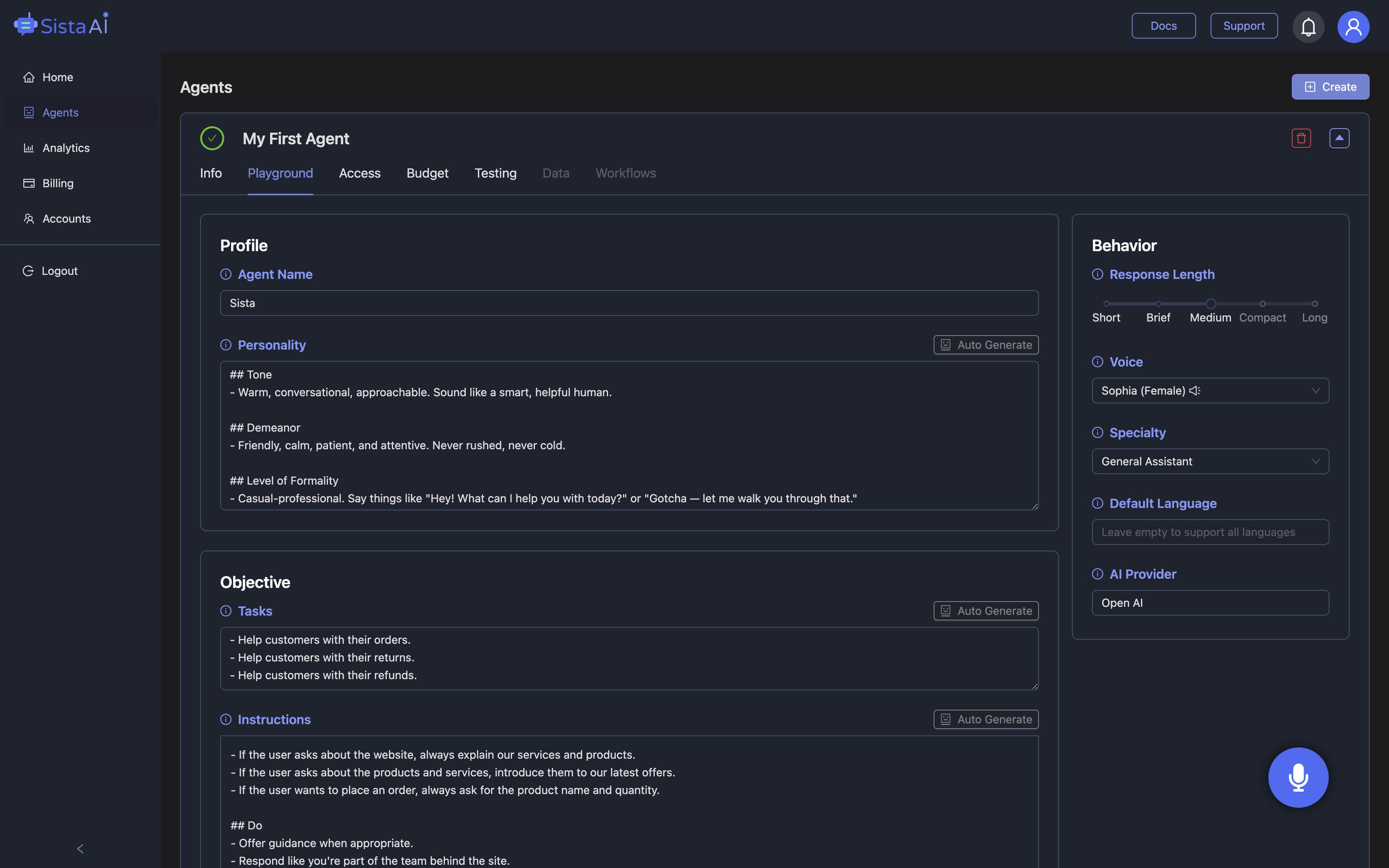
Why Sista AI Web Agents Change the Shopping Playbook
Shoppers want answers in seconds, not sessions. Filters miss nuance, long FAQs bury essentials, and human-backed chat queues can’t scale during peak traffic. Sista AI Web Agents meet this moment by combining natural voice and chat with real workflow automation, so a customer can ask, “Do you have the olive jacket in medium, and can it arrive by Friday?” and get an actionable response. These agents retain context across steps, reducing friction while guiding buyers from discovery to checkout. As consumers grow familiar with chatgpt voice experiences, expectations for conversational speed and accuracy rise, especially on mobile. Sista AI’s voice-first approach makes browsing, comparing, and buying feel like talking to a knowledgeable store associate. Crucially, these agents don’t just answer—they act, connecting to secure APIs to check stock, create carts, process returns, or schedule deliveries. The result is fewer dead ends, higher satisfaction, and a more human web.
How Voice, Session Memory, and Automation Work Together
Sista AI Web Agents are more than conversational wrappers. Session memory maintains context through multi-step flows, so if a shopper changes size or color midway, the agent adapts without starting over. Workflow automation is wired through secure APIs to inventory, order management, shipping, and CRM systems, enabling actions like stock checks, order edits, or refund initiation in real time. Voice-first capability turns the site into a hands-free interface, using speech recognition and natural language understanding to interpret intent and respond instantly. The agents can also act as a voice UI controller—scrolling, filtering, comparing, and even populating forms on behalf of the user. Multilingual support broadens reach, while integrated retrieval from a knowledge base ensures policy answers and product details are accurate. Because everything runs with ultra-low latency, the conversation feels fluid, not transactional. For a quick look at this in action, try the live Sista AI Demo.
Practical Retail Scenarios That Move Metrics
Consider a mid-sized Shopify brand with 5,000 SKUs. A shopper asks, “Is the trail runner available in size 9, and what’s your return policy if it doesn’t fit?” Sista AI Web Agents check availability via inventory APIs, recommend the closest in-stock alternative if needed, and summarize the return policy pulled from the knowledge base. During a return, the agent can generate a label, send an email, and update the order status—all within the same session. For guided shopping, the agent compares two products aloud, adds the winner to cart, and applies a promotion if eligible. Accessibility improves as customers navigate entirely by voice, which is especially useful on mobile and for buyers with disabilities. Even simple arithmetic shows impact: if an agent handles 500 inquiries daily and saves 60 seconds each, that’s over eight hours of operational time reclaimed per day. These moments reduce abandonments, increase resolution rates, and turn help into conversion. Explore similar workflows in the interactive demo.
From Pilot to Production: A Practical Integration Path
Start by mapping your top five workflows: stock checks, order status, returns, shipping quotes, and guided product discovery. Connect the necessary APIs and define guardrails for actions like refunds or re-shipments. Next, curate a knowledge base for policy, sizing, and FAQ content to keep answers consistent. Configure the agent’s voice, tone, and handoff logic so edge cases route to humans gracefully. Deployment is straightforward: add the universal JS snippet, or use platform plugins for frameworks like React and storefronts such as Shopify. Test in a sandbox, then roll out to a percentage of traffic, monitoring performance and feedback in the no-code dashboard. As usage grows, expand to cross-sell, bundles, and post-purchase care. If you want to stand up a pilot quickly, you can sign up and connect your stack in minutes—no rewrites or steep learning curve required. Your team can later fine-tune autonomy levels as confidence and coverage increase.
What to Measure and Why It Matters
Choose metrics that tie to experience and revenue: first-contact resolution for support, conversion rate for product discovery, average order value for recommendations, and deflection rate for offloading routine queries. Track time-to-answer and time-to-action to quantify the effect of automation. For ongoing learning, review transcripts where the agent asked for clarification; these are high-yield opportunities for improving prompts, knowledge, or backend signals. Many teams also watch customer satisfaction and repeat purchase behavior as indicators that voice-first assistance is building trust. Because Sista AI Web Agents behave like autonomous teammates, not simple scripts, they can improve both speed and quality over time. As the broader market shifts to conversational commerce, retailers that add voice-first automation tend to see faster resolution and smoother journeys across devices. Ready to test this on your own site? Spin up a pilot with the Sista AI Demo, then create an account to deploy your first production-ready agent. The next step in retail isn’t another menu—it’s a conversation that can actually get things done.
Stop Waiting. AI Is Already Here!
It’s never been easier to integrate AI into your product. Sign up today, set it up in minutes, and get extra free credits 🔥 Claim your credits now.
Don’t have a project yet? You can still try it directly in your browser and keep your free credits. Try the Chrome Extension.

For more information, visit sista.ai.

